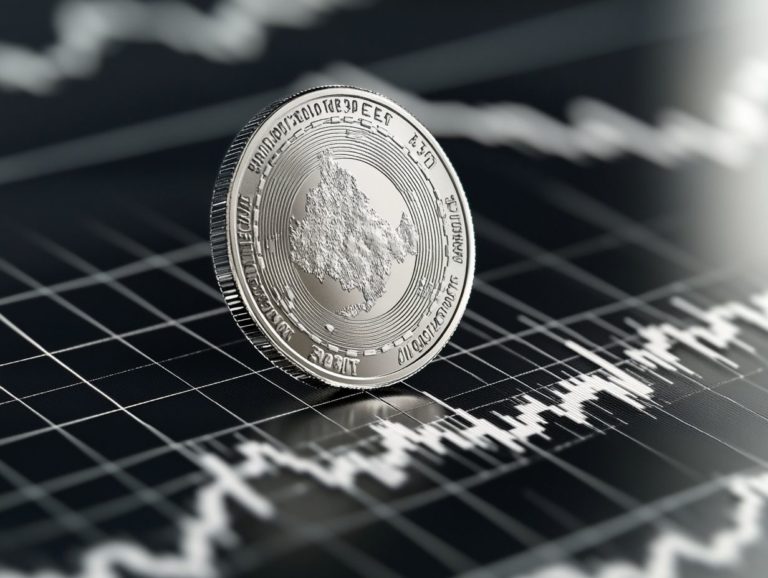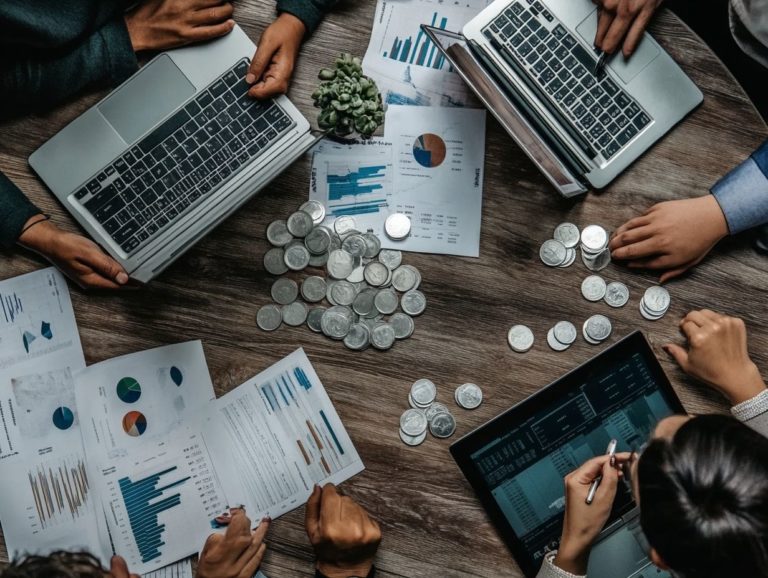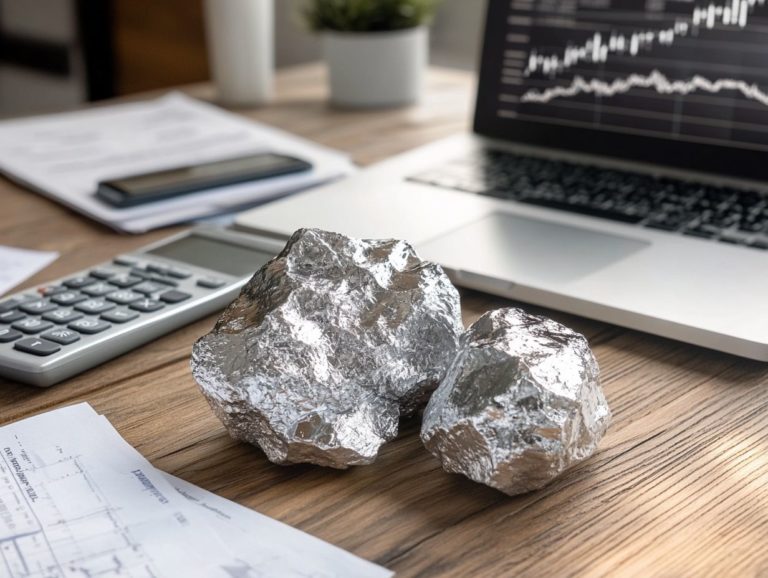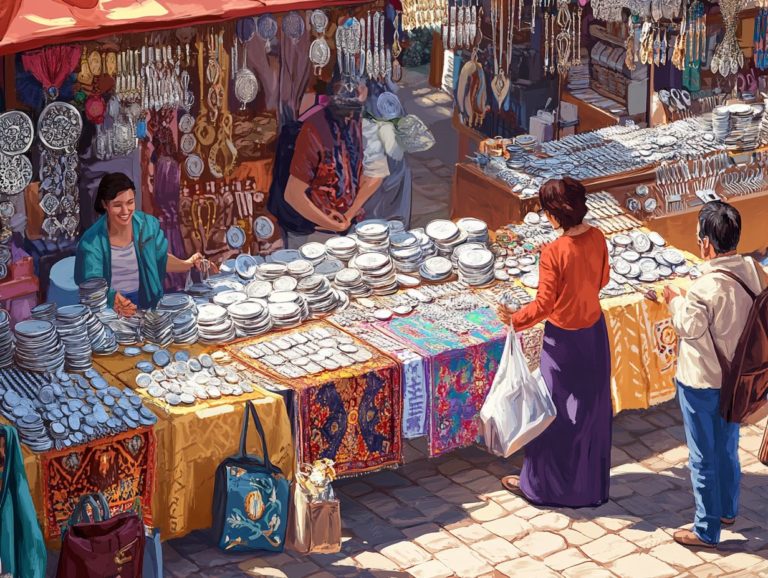Understanding Silver Market Trends
The silver market has long been a source of intrigue for both investors and collectors, representing a unique blend of a precious metal and an industrial commodity. Let s explore the exciting world of the silver market.
This article reveals the key factors that influence its pricing and current trends.
From recent price fluctuations to the intricate dynamics of supply and demand, you’ll find guidance on effective investment strategies while also weighing potential risks and rewards.
Expert forecasts and essential factors to monitor will empower you to navigate this fascinating market landscape with confidence.
Contents
- Key Takeaways:
- The Basics of the Silver Market
- Current Trends in the Silver Market
- Investing in the Silver Market
- Predictions for the Future of the Silver Market
- Frequently Asked Questions
- What is the silver market and why is it important to understand its trends?
- What factors influence the trends in the silver market?
- How can I track the current trends in the silver market?
- What are some potential risks associated with investing in the silver market?
- How can I use my understanding of silver market trends to make investment decisions?
- Are there any strategies for minimizing risks in the silver market?
Key Takeaways:
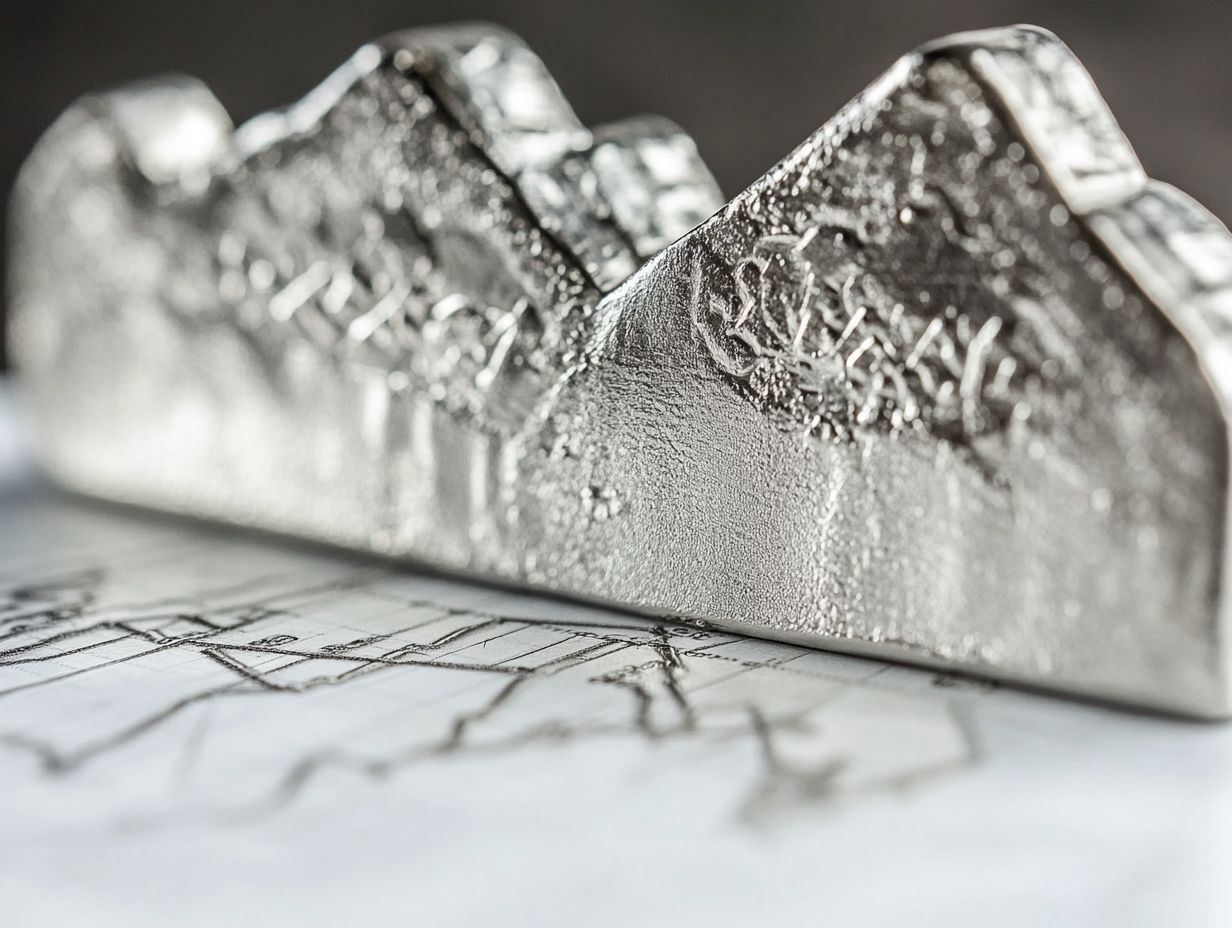
- Silver market is the global exchange for buying and selling silver, influenced by economic, geopolitical, and industrial factors.
- Recent trends in the silver market reflect fluctuating prices due to changes in supply and demand dynamics.
- Investing in silver requires careful consideration of strategies, risks, and potential rewards. Future predictions suggest continued volatility and the need to monitor key factors.
The Basics of the Silver Market
The silver market is a key part of the global commodities scene, including everything from mining to selling. This precious metal is valued not only for its stunning aesthetics but also for its remarkable properties, such as high electrical conductivity.
Its versatility allows for applications that span from exquisite jewelry to cutting-edge technological innovations. As one of the cornerstone precious metals, silver significantly impacts investment strategies and economic trends.
These trends mirror the intricate dynamics of supply and demand shaped by the currents of global economies.
What is Silver Market?
The silver market encompasses the trading and commercialization of silver, a highly sought-after precious metal recognized for its unique properties and extensive applications.
Historically, silver has held a prominent place in jewelry making, enhancing the allure and beauty of adornments across various cultures and eras. Its lustrous finish and malleability make it the go-to choice for artisans and consumers alike.
In contemporary times, silver has evolved beyond mere aesthetics, finding its niche in numerous technological applications. Its exceptional conductivity and antibacterial properties have made it invaluable in electronics, photovoltaics, and medical devices.
The silver market serves as a vital component in investment portfolios, acting as a safeguard against inflation and financial instability. Investors see silver as a tangible asset, and understanding what drives the silver investment market can enhance their trading strategies. Silver is traded through futures contracts (agreements to buy or sell silver at a future date) and exchange-traded funds.
Factors Affecting Silver Prices
Several factors significantly influence silver prices, including the intricate interplay of supply and demand dynamics, inflation expectations, and broader economic trends that together shape market sentiment.
The balance between supply and demand is paramount; when demand from industries grows or more investors show interest, silver prices can jump. Conversely, an excess supply might trigger price declines.
Inflation expectations are equally vital, as rising inflation often drives investors to seek tangible assets like silver, effectively using it as a safeguard against currency devaluation.
Global economic conditions such as slowing growth or geopolitical tensions further contribute to price fluctuations by swaying market confidence. The growing demand from sectors like electronics and renewable energy adds another layer of complexity, as various industries compete for the finite silver resources available, highlighting the importance of understanding silver market dynamics.
Current Trends in the Silver Market
Current trends in the silver market show how price changes and demand shift, providing valuable guidance for both investors and enthusiasts. These insights can help you seize opportunities in the ever-changing silver market.
Recent Price Fluctuations
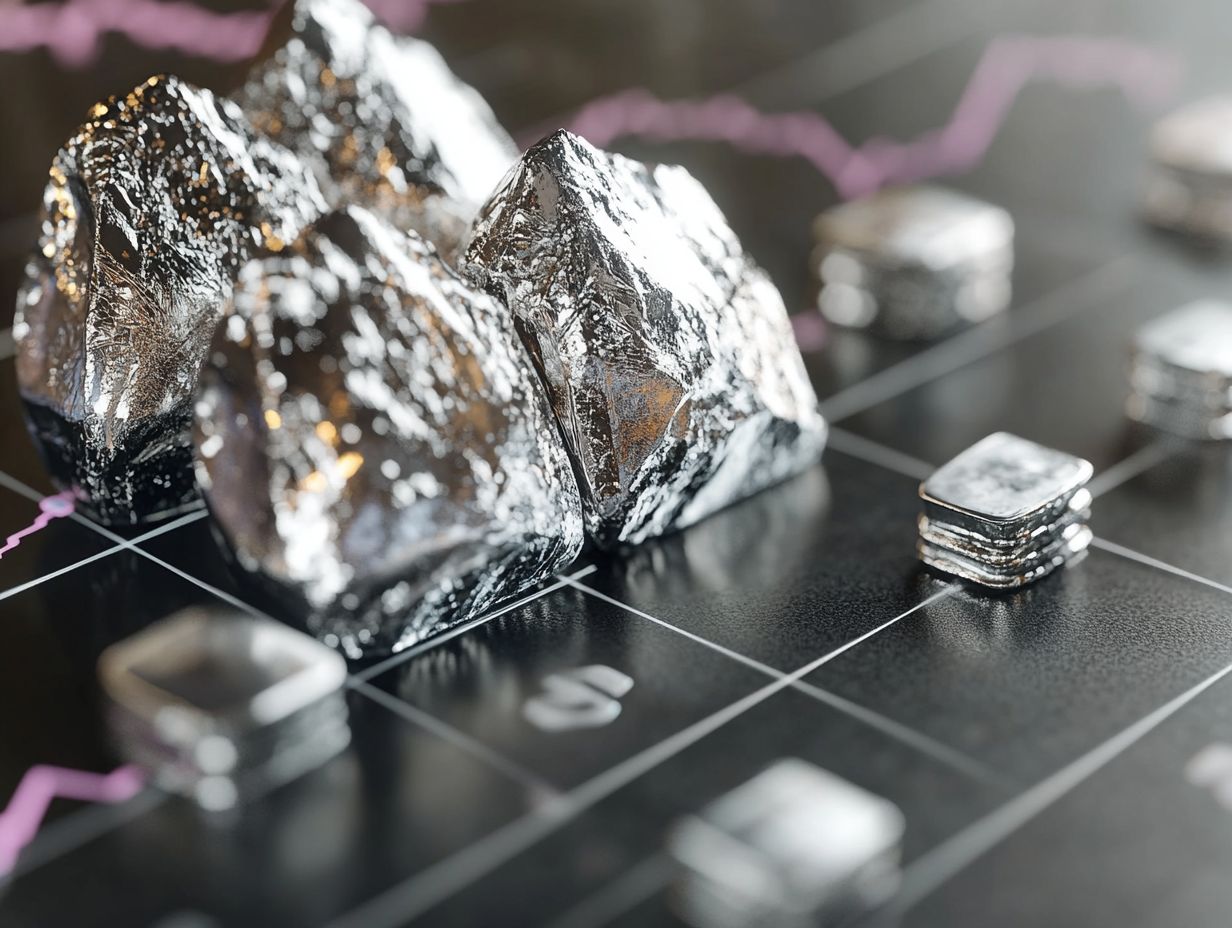
Recent price fluctuations in the silver market have been shaped by a multitude of economic trends, including shifts in global supply chains and evolving investor sentiment.
Over the past few months, significant volatility has affected silver prices, with recent reports revealing a rise of about 15% compared to last year. Historical comparisons show that these fluctuations are not particularly unusual, providing an intriguing backdrop for those observing the market.
Factors such as increasing inflation rates, changes in manufacturing output, and geopolitical tensions play critical roles in these variations.
More individuals are turning to silver as a safe haven during uncertain economic times, while industrial demand continues to climb alongside the recovery of global economies. Staying informed is crucial if you want to navigate the silver market successfully, especially by understanding the market dynamics of platinum!
Demand and Supply Dynamics
Understanding the dynamics of silver demand and supply is essential for grasping the fluctuations in silver prices. Various sectors, including technology, jewelry, and investment, play a pivotal role in this equation.
As industries evolve, you will notice an increase in silver demand, particularly from the rapidly growing tech sector, where silver is integral to electronics and solar panels. This surge is further enhanced by the green revolution, highlighting the need for sustainable energy solutions, amplifying silver’s allure.
Fluctuations in mining outputs and market speculation significantly influence availability, creating a delicate balance that traders should monitor. This intricate interplay of demand and supply sways prices and shapes market trends, reflecting broader economic conditions and consumer preferences.
Investing in the Silver Market
Dive into the silver market and unlock amazing opportunities! You can acquire silver coins, delve into Exchange-Traded Funds (ETFs), or explore silver mining stocks all avenues that enable you to capitalize on the potential growth of this precious metal.
Strategies for Investing in Silver
Here are several effective strategies for investing in silver that you might find appealing:
- Direct purchases of silver coins
- Investing in ETFs
- Exploring opportunities within silver mining companies
Understanding the unique benefits of each method can significantly enhance your investment potential and risk management. If you re drawn to tangible assets, owning physical silver coins offers a sense of security, allowing you to hold your wealth in a concrete form. Conversely, silver ETFs provide easy liquidity and diversification, making them an attractive option for a more hands-off approach.
When considering silver mining stocks, it is crucial to evaluate the performance of specific companies, as their success can heavily impact your return on investment. Analyzing market conditions and understanding the fundamental metrics of these assets is essential for making informed decisions that align with your financial goals.
Potential Risks and Rewards
Investing in silver presents a unique blend of potential risks and rewards, shaped by economic trends, market volatility, and the ever-changing landscape of silver prices.
The charm of silver often stems from its historical reputation as a safe-haven asset, particularly during times of economic uncertainty. When inflation creeps up or the stock market stumbles, many investors gravitate toward silver as a reliable hedge against loss.
However, this strategy isn’t without hurdles. Prices can be influenced by various factors, such as supply and demand dynamics, geopolitical tensions, and shifting investor sentiment. While you might regard silver as a stable investment, its intrinsic value—the actual worth of an asset—can fluctuate considerably, necessitating a thorough analysis, including understanding the silver supply chain, before you take the plunge.
Understanding these nuances is crucial for making well-informed investment decisions.
Predictions for the Future of the Silver Market
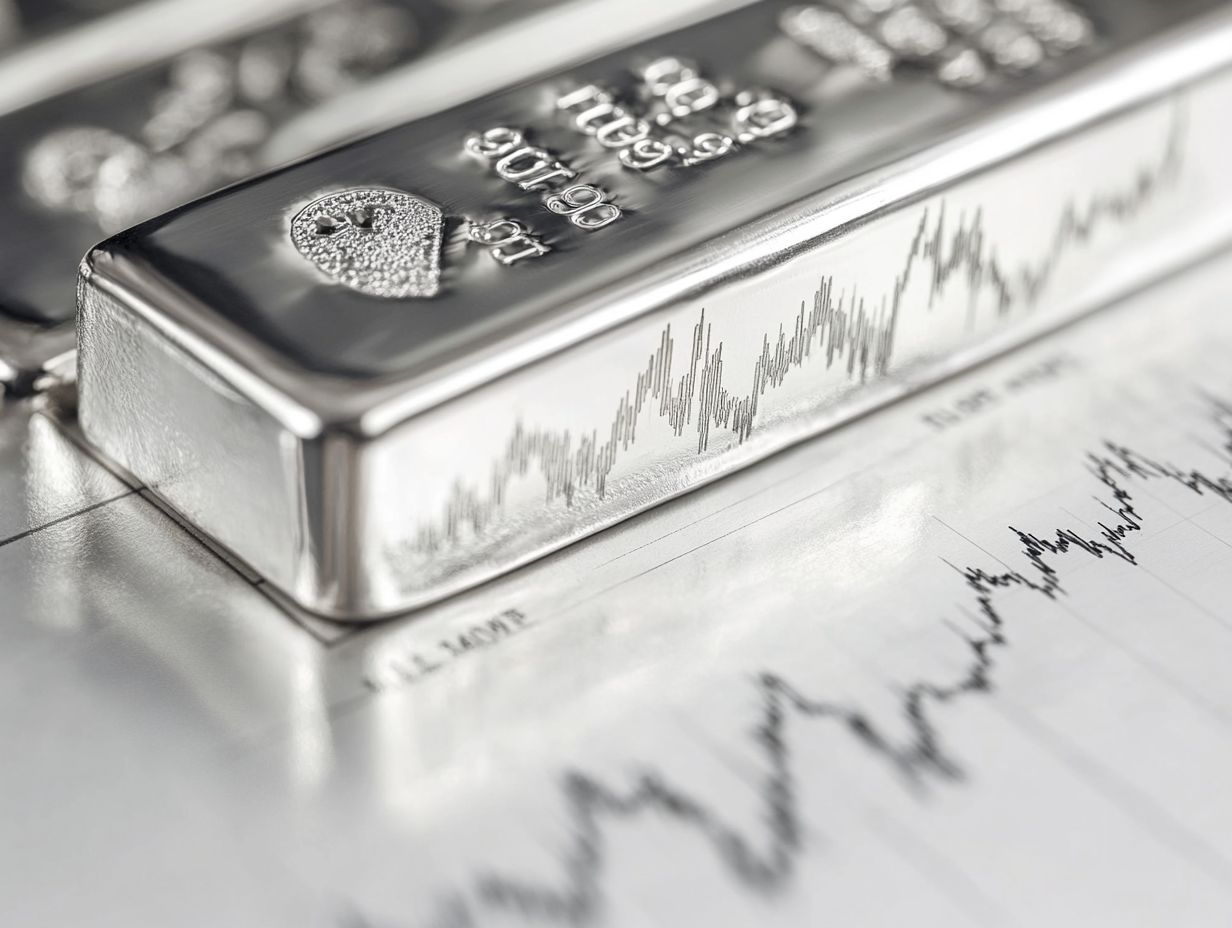
As you consider the future of the silver market, it is essential to recognize the intricate interplay of various factors. Silver demand, inflation expectations, and prevailing economic trends will all significantly influence prices in the coming years.
Staying informed about these dynamics will enable you to make educated decisions in this evolving landscape.
Expert Forecasts and Analysis
Expert forecasts and analyses suggest that the silver market is on the brink of significant transformations. These changes are influenced by evolving economic trends and shifts in silver demand across various industries.
As a crucial element in sectors like electronics, solar energy, and jewelry, heightened demand may push prices upward in the coming years. Industry analysts are closely monitoring inflation rates and global economic health, both of which will exert considerable influence on the valuations of precious metals.
With governments around the world prioritizing sustainable technologies, the necessity for silver in renewable energy applications may further enhance its appeal as a compelling investment.
Given these factors, stay alert! The silver market is evolving rapidly.
Factors to Watch Out For
Pay close attention to shifts in silver demand, inflation expectations, and broader economic trends. These elements are interconnected and can result in significant price fluctuations.
An increase in industrial demand fueled by emerging technologies like solar energy and electric vehicles could support higher prices. Rising prices often lead investors to buy precious metals as protection against value loss.
Economic uncertainties, such as geopolitical tensions or changes in monetary policy, can sway investor sentiment. This may prompt strategic adjustments in how portfolios are balanced around silver investments. Understanding these dynamics is essential for navigating this evolving landscape successfully.
Frequently Asked Questions
What is the silver market and why is it important to understand its trends?
The silver market refers to the buying, selling, and trading of silver as a commodity or investment. Understanding its trends can help investors make informed decisions and potentially profit from market fluctuations.
What factors influence the trends in the silver market?
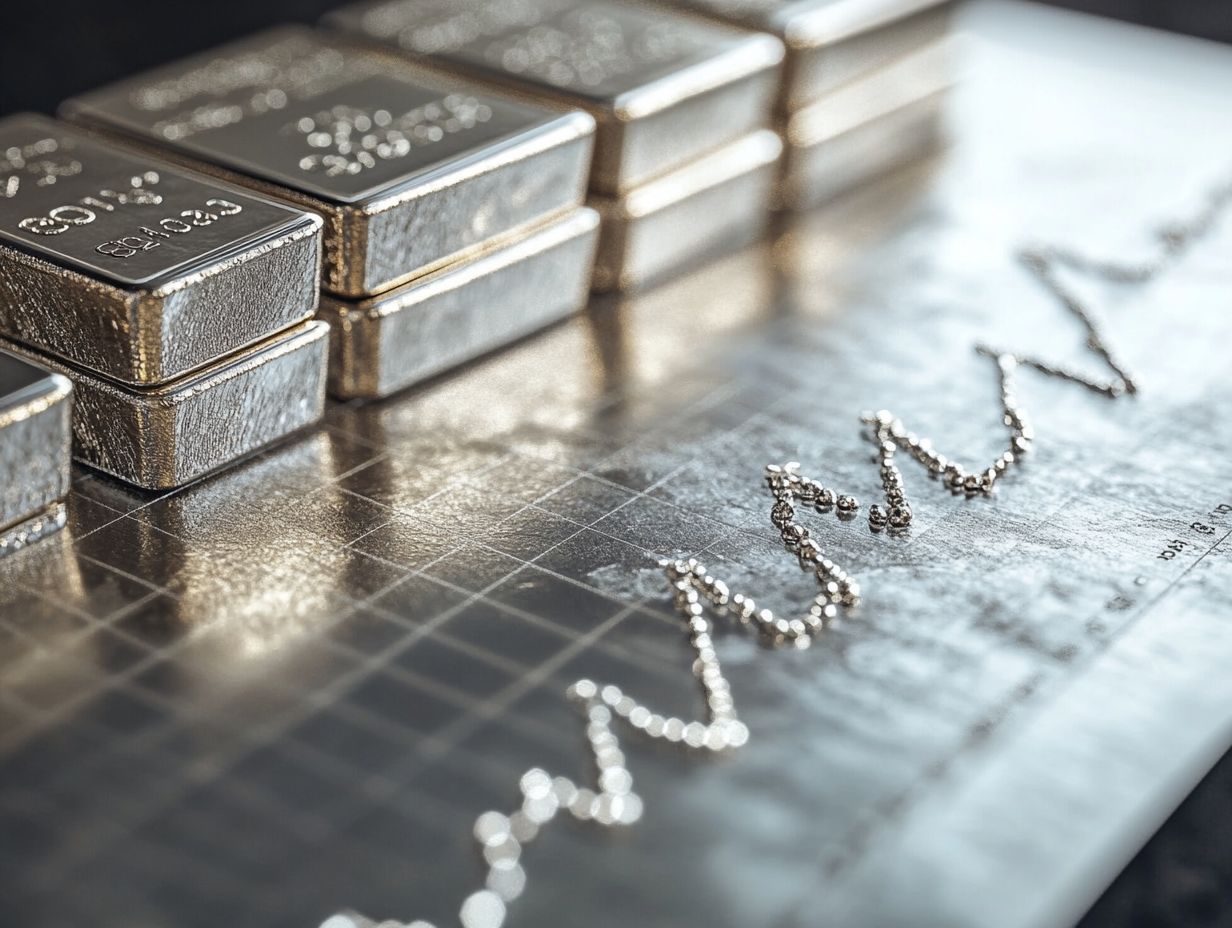
Factors that can affect silver market trends include global economic conditions, political stability, supply and demand dynamics, and the performance of other precious metals.
How can I track the current trends in the silver market?
You can track silver market trends through various sources such as financial news outlets, market analysis reports, and online trading platforms. Regularly monitoring these sources will keep you informed about market developments.
What are some potential risks associated with investing in the silver market?
Like any investment, trading silver carries risks. These include market volatility, unexpected events that can impact prices, and the possibility of losing money if the market moves against your investment.
How can I use my understanding of silver market trends to make investment decisions?
By analyzing silver market trends, investors can identify potential opportunities to buy or sell silver at optimal prices. This can be achieved through technical analysis, fundamental analysis, or a combination of both.
Are there any strategies for minimizing risks in the silver market?
One strategy for mitigating risk in the silver market is diversification. Spreading your investments across different asset classes can help balance potential losses and gains in the market.










